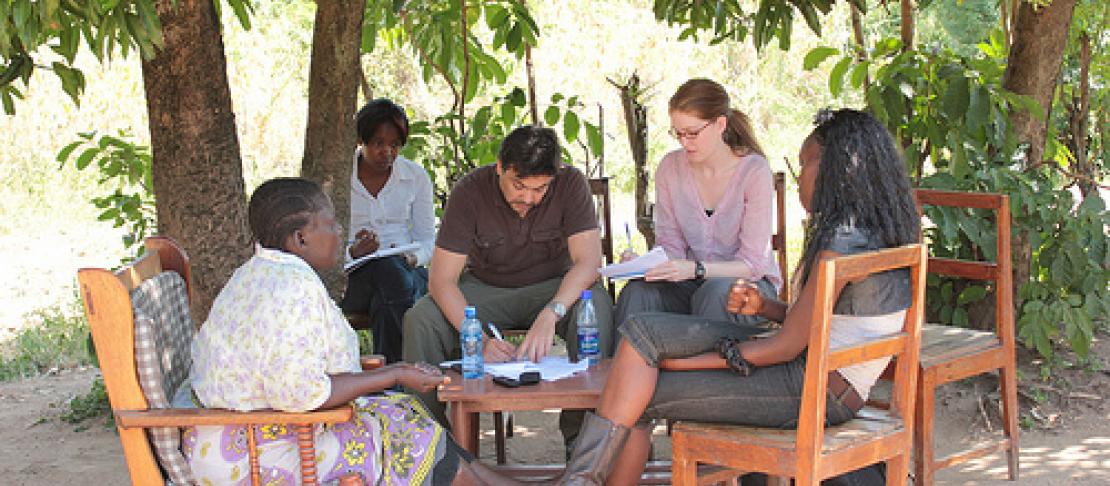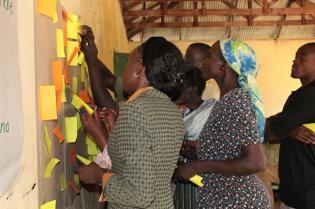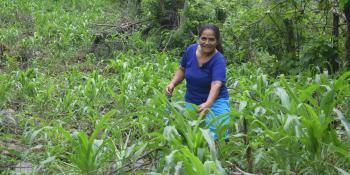What really matters to people experiencing the effects of climate change?

Guest Blog by: Chase Sova, visiting researcher on 'Adaptive Capacity under Progressive Climate Change', CCAFS.
Choosing the best climate change adaptation and mitigation strategies in agriculture can be a challenging task for decision makers and farmers alike. Given the many options available, it is important that scarce resources are used to support measures that are both cost effective and reflect the needs of communities vulnerable to the impacts of climate change. In July, the CGIAR Climate program (CCAFS) joined forces with Oxford University and ViAgroforestry to pilot a new way of identifying community appropriate adaptation and mitigation strategies and determining their associated costs and benefits. The approach is built on a novel cost-benefit framework called Social Return on Investment (SROI).
Introducing the Social Return on Investment method
SROI is a participatory method for discovering the costs and benefits (economic, social and environmental) of an organization, policy or project. It uses focus groups and interviews with stakeholders to create visual Impact Maps that tell the story of how change is being created and how the impacts can best be measured – all from the perspective of those directly affected. SROI is fast gaining recognition for its successful use in measuring the complete social impacts of NGOs and government policies. This pilot in agricultural adaptation and mitigation provided a new context for SROI’s application. Two complementary activities took place; (1) A three day workshop for the community to self-identify appropriate adaptation and mitigation strategies and (2) individual interviews to measure the costs and benefits of those strategies.
The research team, representing CCAFS Theme 1: Adaptation to Progressive Climate Change and Theme 3:Pro-poor Climate Change Mitigation, Oxford University’s Environmental Change Institute and ViAgroforestry’s Carbon Program, arrived in the village of Kochiel, Kenya in early July for the two week program. Ariella Helfgott, Caitlin Corner-Dolloff and Abrar Chaudhury of Oxford University brought considerable expertise in participatory research to the opening workshop, leading a host of activities aimed at understanding the community’s organizational structure, values, norms and aspirations. The use of maps, collages, diagrams and challenge-response narratives allowed the participants to identify and rank the most appropriate adaptation and mitigation options for their community. Steps for the implementation of those strategies were also identified during the workshop, including potential barriers and incentives for participation.
Biodiversity and trees seen as adding value to the community
The workshop was followed by the second phase of the pilot: a week of individual interviews. Interviews focused on the top ranked adaptation/mitigation strategy identified by the community - the interplanting of four tree species within croplands. During the interviews farmers identified specific challenges in attaining seeds, stable sources of water and appropriate agroforestry training. A long list of benefits was also identified by the famers, including wood for construction, fodder for animal feed, and leaf mulch (among many others). Finally, first hand estimates of input costs for planting and maintaining the trees as well as the monetary returns on the benefits the farmers experienced were gathered during the interviews.
While these traditional economic results are valuable in themselves, the story of change does not end here. Frequently, for example, the farmers identified the tree’s aesthetic qualities as having additional value, together with the shade they provide. Increased biodiversity within the community was also a source of value, contributing to improved attitudes and community pride. These are the stories that often go untold, but that SROI aims to discover. Documenting monetary benefits alone often misinterprets what matters most to communities and fails to capture what improved incomes eventually translates into. In Kochiel, for example, increased incomes generated by the adaptation/mitigation intervention mean that more children will attend secondary education and that small businesses will begin to emerge in the community. These are the priorities identified by the farmers themselves and are the true measures of success.
In a world where we know the price of everything but the value of nothing, SROI is a step towards understanding what truly matters to those living and experiencing the effects of climate change. It is our hope that this approach proves helpful in the planning, implementation and evaluation of adaptation and mitigation strategies in agriculture by building on community strengths and aspirations and providing the type of informed decision making tools that help to mobilize resources where they are most needed.


